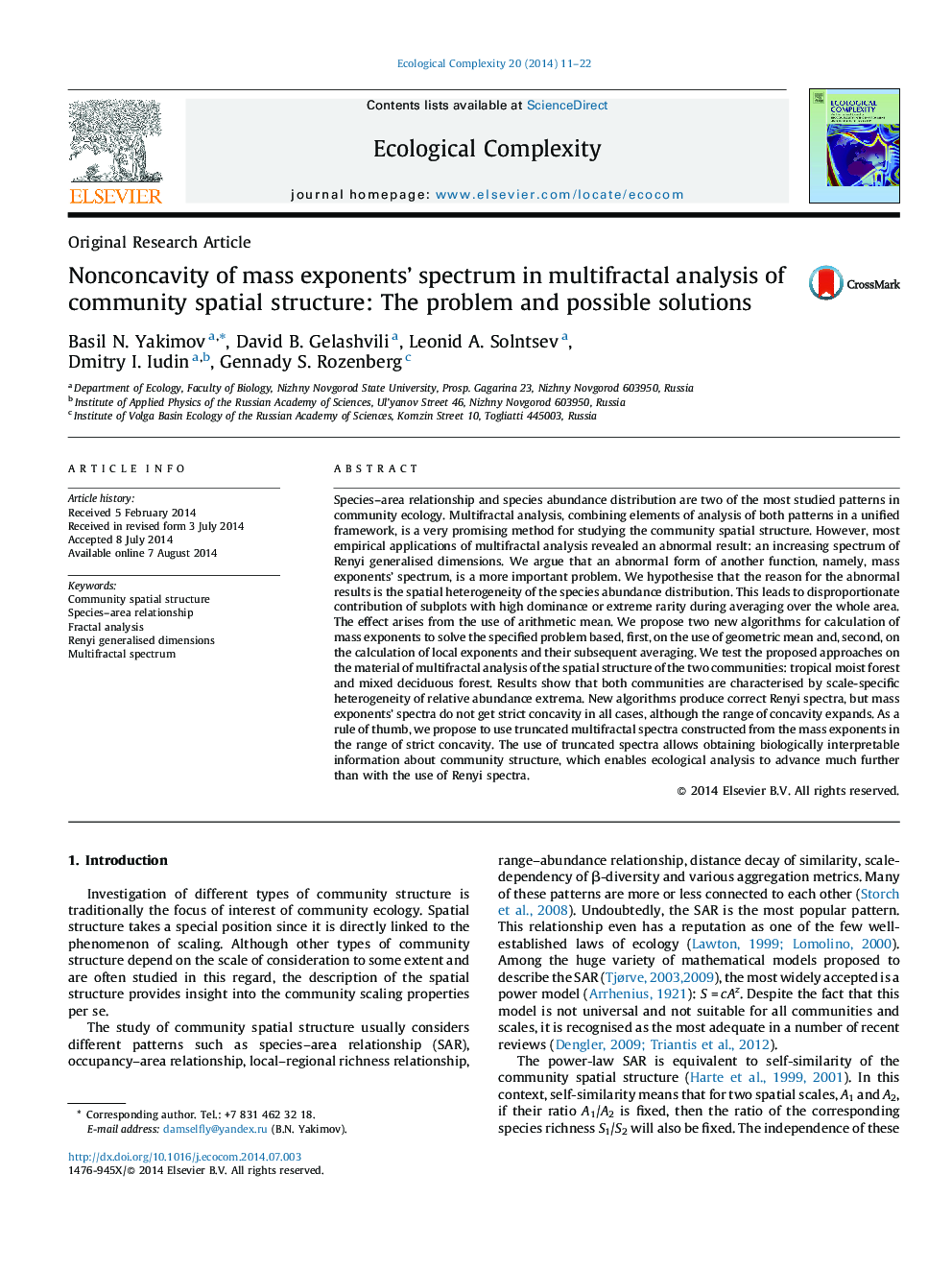| Article ID | Journal | Published Year | Pages | File Type |
|---|---|---|---|---|
| 4372352 | Ecological Complexity | 2014 | 12 Pages |
•The abnormal results of multifractal analysis of communities’ spatial structure stem from nonconcavity of mass exponents’ spectrum.•The reason of the abnormal results is the spatial heterogeneity of the species abundance distribution.•We propose two new algorithms for calculation of mass exponents.•New algorithms produce correct Renyi spectra and expand the range of concavity of mass exponents’ spectra.
Species–area relationship and species abundance distribution are two of the most studied patterns in community ecology. Multifractal analysis, combining elements of analysis of both patterns in a unified framework, is a very promising method for studying the community spatial structure. However, most empirical applications of multifractal analysis revealed an abnormal result: an increasing spectrum of Renyi generalised dimensions. We argue that an abnormal form of another function, namely, mass exponents’ spectrum, is a more important problem. We hypothesise that the reason for the abnormal results is the spatial heterogeneity of the species abundance distribution. This leads to disproportionate contribution of subplots with high dominance or extreme rarity during averaging over the whole area. The effect arises from the use of arithmetic mean. We propose two new algorithms for calculation of mass exponents to solve the specified problem based, first, on the use of geometric mean and, second, on the calculation of local exponents and their subsequent averaging. We test the proposed approaches on the material of multifractal analysis of the spatial structure of the two communities: tropical moist forest and mixed deciduous forest. Results show that both communities are characterised by scale-specific heterogeneity of relative abundance extrema. New algorithms produce correct Renyi spectra, but mass exponents’ spectra do not get strict concavity in all cases, although the range of concavity expands. As a rule of thumb, we propose to use truncated multifractal spectra constructed from the mass exponents in the range of strict concavity. The use of truncated spectra allows obtaining biologically interpretable information about community structure, which enables ecological analysis to advance much further than with the use of Renyi spectra.
